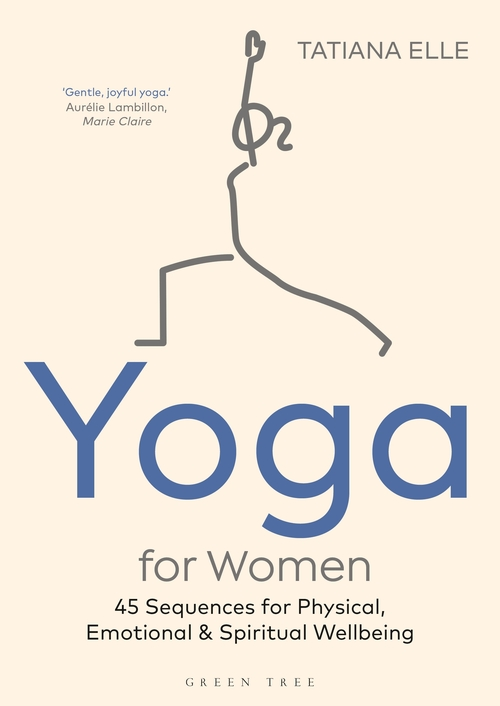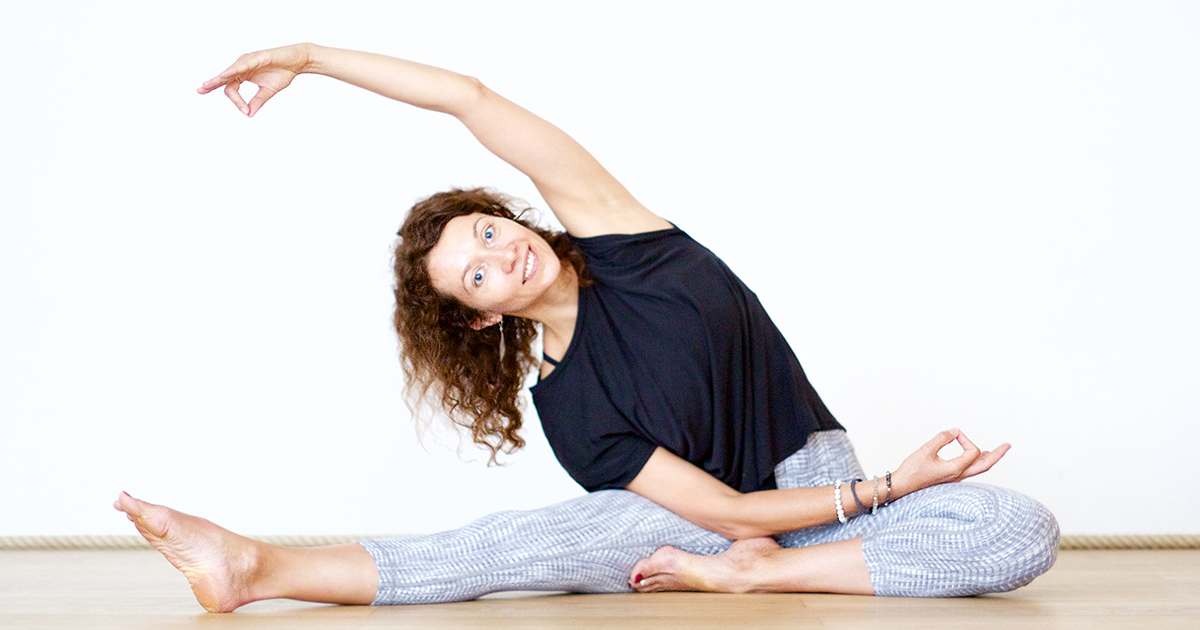In her book Yoga for Women (Bloomsbury, Green Tree Publishing 2021), which was published this year, yoga teacher Tatiana Elle offers 45 sequences that are especially tailored to meet the needs of contemporary women. Drawing from her knowledge of Chinese traditional medicine, Elle does not focus solely on asanas (body postures)—instead, she offers insight into a range of practices that are profoundly interconnected with yoga and that address the spiritual and the emotional as well as the physical.
For example, she makes use of mudras and visualizations to enhance the practitioner’s experience. She also provides a comprehensive description of the chakras system and highlights the importance of the breath. Additionally, the book includes dedicated sections where the practitioner can log their experience and aspirations. I particularly enjoyed partaking in these exercises because they encouraged me to reconnect with my values and to stay in the present moment.

Elle is concerned with the practitioner as a whole being, and it is immediately apparent that her book is not about looking good or achieving a certain body shape:
“Yoga for Women includes various facial yoga exercises aimed to relax and even rejuvenate the face. This is without looking for ‘eternal youth’, which is incompatible with self-acceptance. The face massages and specific exercises stimulate different parts of the face. The benefits are not limited to the physical – they also influence the emotional state.” (18)
The illustrations by Iris Glon reinforce this point, because they are comprised of simple black strokes that depict different postures. This look is very refreshing, especially in comparison to the typically fit (and often very “same-y”) yoga model that usually features in such books. As much as I enjoyed the simplicity of the illustrations, a part of me wondered if a beginner would find it difficult to fully grasp the poses. Thankfully, even if that were the case, the precise and clear instructions that accompany the images make the journey much easier.
For example:
Tree [Pose]
- Roll your back up slowly and stand up. Put your palms together in front of your chest.
- Put your weight on your right foot.
- As you breathe out, lift your perineum and tense your
abdominal wall.
- Place your left foot against your right calf.
- Open your root chakra for 5 to 10 breaths.
- Do the same on the other side.(120)
While most of the asanas that feature in the book will be familiar to those who have practiced yoga before, the emphasis on femininity make it a very special read. In her unique take, Elle offers the practitioner a variety of sequences that are targeted to women’s natural body cycles and needs.
This encouraged me to listen to my body. I also felt like I was being given permission to really treat myself—something that the modern woman rarely has time for! The book features a sequence for every season, for different times of the day, as well as for various moments in the hormonal cycle. It also includes sequences around specific emotional needs, such as reconnecting with the inner child, anchoring and creativity.
Perhaps my favorite part of the book is that, just like the yoga mat, it does not expect anything of the practitioner. We are permitted to feel sad and even encouraged to acknowledge what we usually label as ‘negative’ aspects of our emotions. As Elle writes “I welcome my sadness as part of my feelings.” (207)
No need to come into the practice with forced enthusiasm—instead, be honest with yourself and meet yourself where you are, right now. The book remains true to this message and—as opposed to many wellness books these days—it encourages contemporary women to love and accept ourselves just as we are.

